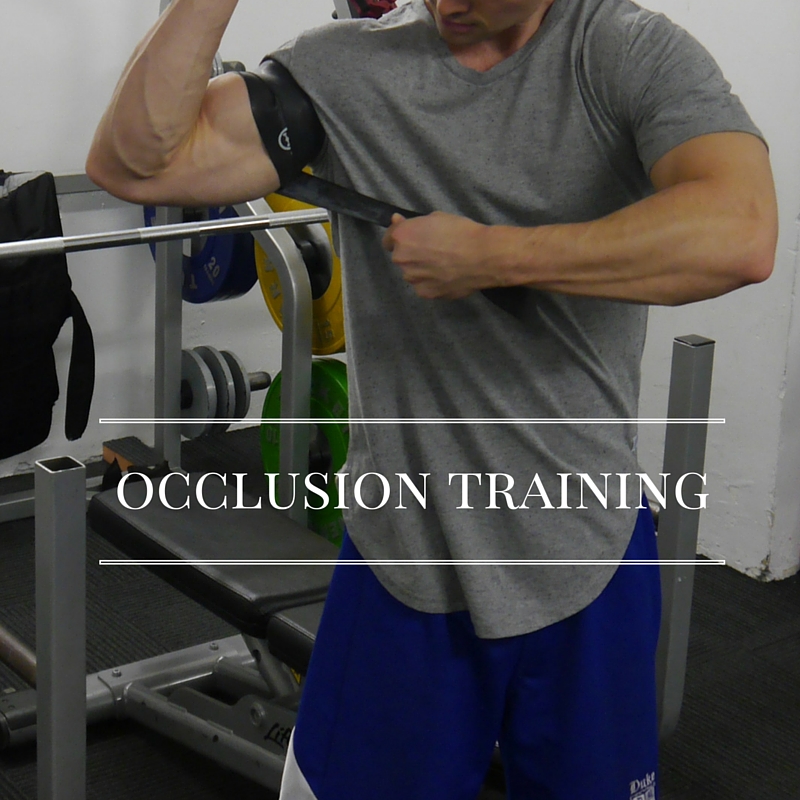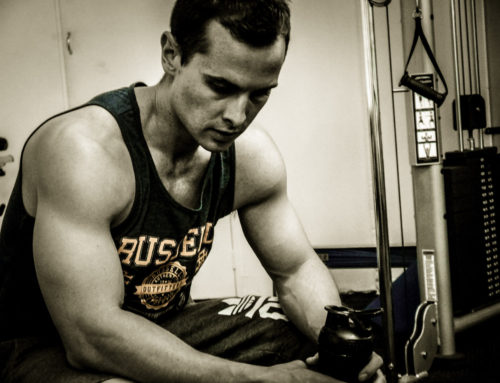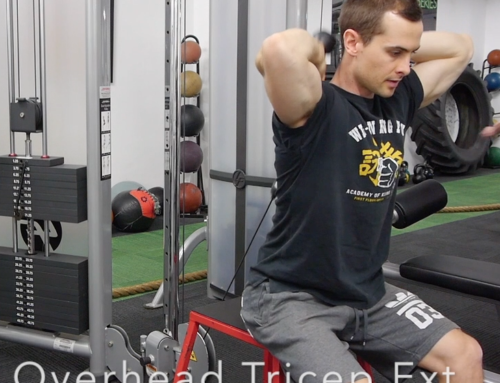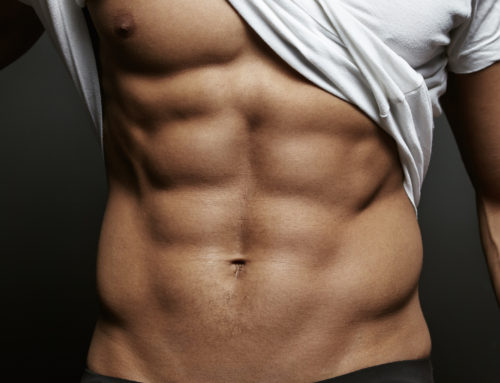Occlusion training is a great training method to increase muscle mass. When restricting blood flow to your muscles, this creates a powerful stimulus of growth for your fast twitch muscle fibres. Fast twitch muscle fibres have huge potential for growth and for the general gym goer is usually untrained as most muscle building methods hit slow twitch fibres.
Occlusion training is when you use bands, tourniquets, straps or whatever you can come up with to tie around certain areas of your body that restricts return of blood flow. When you occlude the muscle, it will allow blood into the muscle, but restrict the flow of blood out of the muscle, known as venous pooling. It is this very reason that you do not perform occlusion with a band that is too tight. It must be a 7/10 tightness so that blood can still flow into the muscle
When to use Occlusion Training
Occlusion can be cycled in and out of your training programme as you please, however there are some specific times that I like to use it:
When I am targeting the same muscle group more than once per week I like to use occlusion as the load I can use is much less, sparing my joints and I don’t get the same muscle soreness compared to other techniques.
If I have been lifting heavy for extended periods and my joints are feeling worn out, but I still want to train, occlusion is great as I can still build muscle without wearing down my body as much.
Occlusion training is brilliant when you have an injured body part that cannot handle large loads. Occlusion will still stimulate the hypertrophic (muscle building) response you are after without risking further damage and at times encouraging recovery.
Use the occlusion method towards the end of a workout to get a large amount of cell swelling (see below for more specifics).
Who should use Occlusion Training?
- Anybody that is after hypertrophy
- If you have an injured body part
- During a deload
- When you are training the same body part multiple times per week
How to Use Occlusion Training
The goal of occlusion training is to place straps, bands or wraps around either the upper arm or upper leg in order to restrict blood flow from going out of the muscle, whilst still allowing blood in. This is a very important point to note, you must not fully occlude the limb. You are better off not having your strap tight enough than going the opposite and having it too tight.
You are aiming for a tightness level of 7 out of 10. If you find that after your first set your limb goes purple and blotchy, then that is too tight.
Training the upper body:
Wrap the straps around your upper arm with the strap overlapping itself, rather than in a spiral motion down the arm.
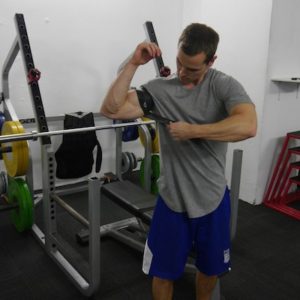
You will use the same occlusion position no matter if you are training, arms, shoulders, chest or back. Do not wrap from the elbow down
Training the lower body:
Similar to the upper body, you will wrap the straps around the upper thigh, ensuring that it is once again not in a spiral motion. You will use the same occlusion position no matter what part of the lower body you are training.
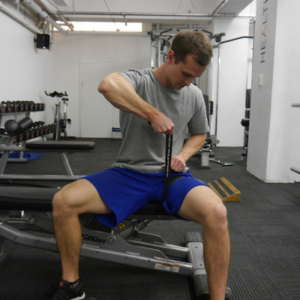
Choosing the Weight
Choose a weight that is 50% of the max weight you could lift for 1 rep
Why does Occlusion Training Cause muscle Growth
The act of restricting blood flow out of a muscle, but still allowing blood in will cause the muscle to swell with blood and we know that cell swelling induces hypertrophy. Another metabolic reaction important for muscle growth is production of lactate, which occlusion training produces large amounts of. Occlusion training also creates a large amount of fatigue in the working muscle, initiating recruitment of the higher threshold motor units that have a large capacity for growth.
Therefore it is a four-pronged approach that cause muscle growth
- Cell swelling
- Lactate production
- Fatigue
- Recruitment of high threshold motor units
My 2 Favourite Methods of Occlusion Training
The Finisher
Perform your normal workout and then finish with 2 occlusion exercises
Example for Arms
A1. Preacher Curl – 6 reps
A2. Standing Barbell – 12 reps
Rest 90s and Repeat 3 more times
B1. Dips – 6 reps
B2. Decline EZ Bar Tricep Ext – 12 reps
Rest 90s and Repeat 3 more times
(A’s and B’s are normal reps)
C1. Incline DB Curl
30 reps, 15 reps, 15 reps, 15 reps
Rest 30s between each
D1. Tricep Push Down
30 reps, 15 reps, 15 reps, 15 reps
Rest 30s between each
(C’s and D’s are occlusion)
Start Session Occluded
Please take note of the tempo prescribed – only the A series exercises are occluded
Chest and Back Session – Occlusion bands are placed on upper arm
A1. Decline Dumbbell Bench Press
5 sets of 12 reps – 60s Rest
*Tempo 3030
A2. Seated Row
5 sets of 12 reps – 60s Rest
Tempo 3030
*this means that the tempo is 3 seconds down, no pause, 3 seconds ups and no rest at the top (constant motion, 10s per rep)
How I like to do the above is to simply make sure my set lasts one minute, so I put a stopwatch in front of me and continue to do reps until the one-minute is completed.
As you will see in the video below, my training partner is doing the seated row and we start and finish at exactly the same time and he is watching the clock and lets me know when the 60s is up. This way I don’t get too bogged down with the tempo count, but I still ensure I am doing the concentric phase slightly slower than usual.
The reason I target 60s for the set duration is that many studies have concluded that to induce optimal hypertrophic responses the muscle needs to be under constant tension for 40-70s.
B1. Barbell Shoulder Press
4 sets of 10 reps – 60s Rest
*Tempo 3020
B2. Lat Pull Down
4 sets of 10 reps – 60s Rest
Tempo 3020
*tempo is 3 seconds down, no pause, 2 seconds up and no pause at the top
Please note that if you find the 3030 tempo too hard to count, then another method is to simply perform the movement slowly and keep your eye on a stopwatch if possible, or have your training partner monitor time. Your goal is to ensure the set lasts at least 60s with constant motion.
Caution
An ideal length of time to occlude the muscle for is 20mins and make sure you do not pass the 30minute mark as you risk causing cell death.
Lastly, I would not recommend using occlusion for the elbow or knee down, it is best to occlude the limb closest to your torso, i.e. upper arm and upper thigh.
